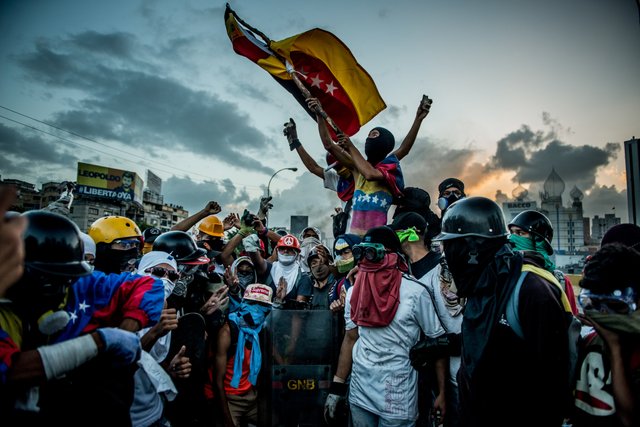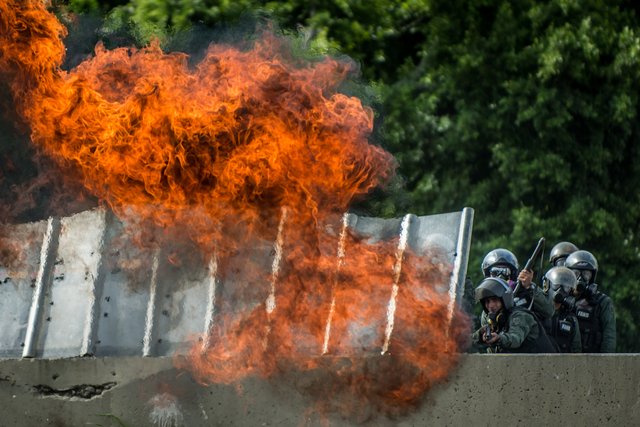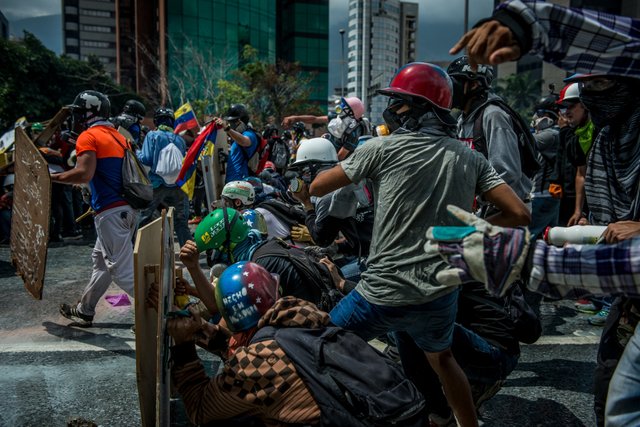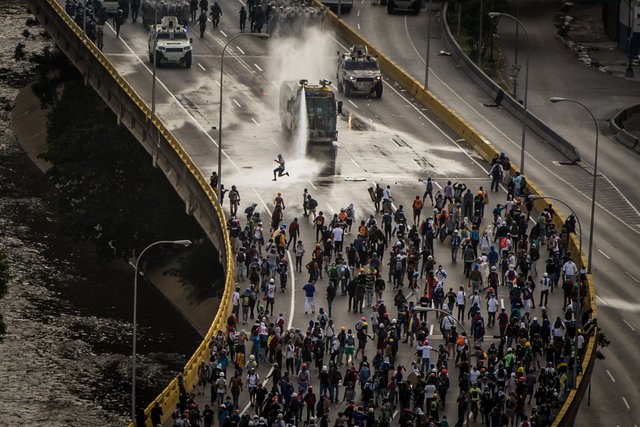The Battle for Venezuela, Through a Lens, Helmet and Gas Mask

CARACAS, Venezuela — Motley throngs of masked antigovernment protesters hurl rocks, fireworks and Molotov cocktails. The police and soldiers retaliate with tear gas, water cannon blasts, rubber bullets and buckshot.
An uprising is brewing in Venezuela.
Nearly every day for more than three months, thousands have taken to the streets to vent fury at President Nicolás Maduro and his increasingly repressive leadership.
These confrontations often turn into lopsided and sometimes lethal street brawls — more than 90 people have been killed and more than 3,000 arrested.


I have worked as a photojournalist for The New York Times in Venezuela for nine years, and for the past two have focused on the plight of Venezuelans struggling with the worst economic crisis in the country’s history.
I have witnessed their growing anger as food and medicine disappear and Mr. Maduro’s authoritarianism intensifies.
His government has delayed elections while jailing protesters and political opponents. Now he has called for a new constituent assembly to be elected at the end of the month, empowered to rewrite the Constitution, which many Venezuelans have called a blatant power grab and threat to their democracy.
Mr. Maduro has called the protests a violent attempt to overthrow his government. Demonstrators say they are invoking their right to rebellion against tyranny, guaranteed by the Constitution he wants to revise.

I often start my day now hopping onto a motorcycle taxi and heading to the front lines where the tear gas is wafting and the projectiles are flying.
I’ve come to know some of the regular protesters, like Tyler, 22, a former government supporter who has become adept at dodging rubber bullets and buckshot behind a homemade shield painted blue, yellow and red to match the Venezuelan flag knotted around his neck. His eyes peek from the black T-shirt wrapped around his face to hide his identity.
We sat beside a burning barricade during a lull and he told me about his family.
Tyler said he was fighting because of medicine shortages that killed his mother, worsened his grandmother’s high blood pressure and left his asthmatic little sister gasping. He said his family could afford only one meal a day, usually just plain white rice.
“We are living with a hunger that we have never had before,” he said. “Things are already really ugly here, and we won’t take it anymore.”
Tyler joined La Resistencia — the ragtag street protesters who clash regularly with government security forces.
Members of La Resistencia say taking to the streets is the only option left.
“If they don’t kill us here protesting, we will die either way — be killed for a cellphone or a pair of sneakers — or we will die of hunger, or die simply from catching any disease because there is no medicine here,” said Marco, a graduate student.
I feel as if I am inside a video game when photographing the front lines — constantly skipping over obstacles and dodging projectiles whizzing from all directions. Dozens of antagonists get hit during each protest, some evacuated with broken bones and bloody wounds.
Unfortunately for the press corps, both sides have less-than-perfect aim. We are frequently pelted with rocks, paint and water cannons. I took a buckshot blast to the helmet from roughly 15 yards that gave me a concussion. Many photographers have fared worse, hospitalized with serious injuries.
Security forces regularly target journalists, beating and arresting them, smashing or seizing their cameras. More than 200 “acts of aggression” against journalists have been reported since the protests began.
Sometimes the protesters hijack 18-wheelers to block the main Francisco Fajardo Highway through Caracas.
They have beaten captured soldiers and police officers and burned their motorcycles. They also have committed mob vigilantism.
When a man was accused of stealing during a protest, Resistencia members punched and stabbed him, doused him with gasoline and set him afire. The man, Orlando Figuera, died days later.
When armored military vehicles aim water cannons to disperse protesters, Resistencia members sometimes fire back with giant slingshots, manned by four people each. Their artillery rounds are baby-food jars full of paint or even human excrement.
“It’s nasty,” one protester said, “but everyone has it, and most important, it’s free.”
The protesters also improvise to protect themselves. Some turn swim goggles and plastic soda bottles into makeshift gas masks, and create shinguards from old magazines and duct tape.
Others have fashioned armor from carpet scraps to thwart rubber bullets and buckshot, lethal at close range. More than 30 protesters have died this way, according to a tally by local journalists.
“Don’t knock it,” one protester said with a grin when asked about his carpet vest. “It has already saved me several times.”
